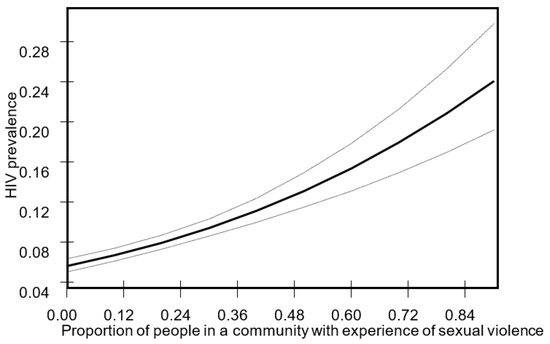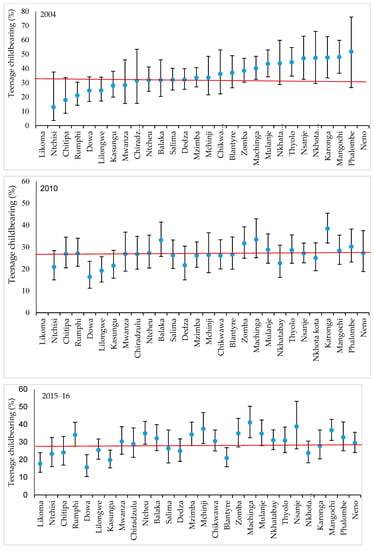Adolescent Sexual and Reproductive Health: Global Perspectives
A topical collection in Social Sciences (ISSN 2076-0760).
Viewed by 20260Editor
Topical Collection Information
Dear Colleagues,
The issue of adolescent sexual and reproductive health (SRH) remains a major global challenge, especially in low and middle-income countries (LMICs), most of which are classified as “multi-burden countries” in terms of adolescent health, with complications of early pregnancy/childbirth and HIV being among the leading challenges (UNFPA and WHO, 2017). Although the period of adolescence offers opportunities for health gains through prevention and early clinical intervention, development of health intervention systems for adolescents has been weak and lags behind those for early childhood or adulthood, and for present global health agendas such as HIV and maternal mortality, data sources are incomplete for adolescents (Fatusi 2016). Concerns around adolescent SRH have intensified amidst recent pandemics. Evidence from previous international health emergencies suggest that epidemics tend to (i) have disproportionate impacts on the SRH of certain subgroups of the population, especially poor and socially marginalized women and youth, and (ii) exacerbate prevailing gender inequalities, increasing risks of gender-based violence and sexual abuse (Ahonsi, 2020). Adolescent girls have been recognized as a particularly vulnerable group during the COVID-19 pandemic, especially in relation to SRH aspects where teenage girls disproportionately drop out of school due to an increased risk of sexual exploitation, pregnancy and forced marriage (Hall et al. 2020). This is consistent with lessons learnt from the Ebola crisis which showed that school closures can lead to increases in gender-based violence, teenage pregnancies, child marriage, exploitation and other forms of abuse against adolescent girls, including online sexual exploitation and grooming, all of which can be particularly devastating for girls with greater vulnerabilities, including refugees, the internally displaced and those living with disabilities (UNAIDS, 2020). This Special Issue invites interdisciplinary papers based on theoretical/systematic reviews or empirical (quantitative or qualitative) research on adolescent SRH, including papers addressing the impact of the COVID-19 pandemic on adolescent SRH.
References
Ahonsi B. (2020). A Research Agenda on the Sexual and Reproductive Health Dimensions of the COVID-19 Pandemic in Africa. Afr J Reprod Health. 24(1):22-25.
Fatusi, AO. (2016). Young People's Sexual and Reproductive Health Interventions in Developing Countries: Making the Investments Count. Journal of Adolescent Health. 59(3), S1 - S3.
Hall KS, Samari G, Garbers S, Casey SE, Diallo DD, Orcutt M, Moresky RT, Martinez ME, McGovern T. (2020). Centring sexual and reproductive health and justice in the global COVID-19 response. Lancet. 395(10231):1175-1177.
UNAIDS (2020). Global AIDS update 2020: Seizing the moment – tackling entrenched inequalities to end epidemics. Available from: https://www.unaids.org/sites/ default/files/media_asset/2020_global-aids-report_en.pdf. (Accessed 03 February 2021).
UNFPA and WHO (2017). Prioritizing adolescent health: a technical guidance. Global Strategy of Every Woman Every Child. UNFPA and WHO-led Working Group.
Prof. Dr. Monica Magadi
Guest Editor
Manuscript Submission Information
Manuscripts should be submitted online at www.mdpi.com by registering and logging in to this website. Once you are registered, click here to go to the submission form. Manuscripts can be submitted until the deadline. All submissions that pass pre-check are peer-reviewed. Accepted papers will be published continuously in the journal (as soon as accepted) and will be listed together on the collection website. Research articles, review articles as well as short communications are invited. For planned papers, a title and short abstract (about 100 words) can be sent to the Editorial Office for announcement on this website.
Submitted manuscripts should not have been published previously, nor be under consideration for publication elsewhere (except conference proceedings papers). All manuscripts are thoroughly refereed through a double-blind peer-review process. A guide for authors and other relevant information for submission of manuscripts is available on the Instructions for Authors page. Social Sciences is an international peer-reviewed open access monthly journal published by MDPI.
Please visit the Instructions for Authors page before submitting a manuscript. The Article Processing Charge (APC) for publication in this open access journal is 1800 CHF (Swiss Francs). Submitted papers should be well formatted and use good English. Authors may use MDPI's English editing service prior to publication or during author revisions.
Keywords
- adolescents
- sexual and reproductive health (SRH)
- teenage/early pregnancy/childbirth
- unintended pregnancy
- SRH service access/use
- gender-based violence
- early/child marriage
- sexual exploitation/abuse
- HIV/AIDS
- impact of Covid-19







